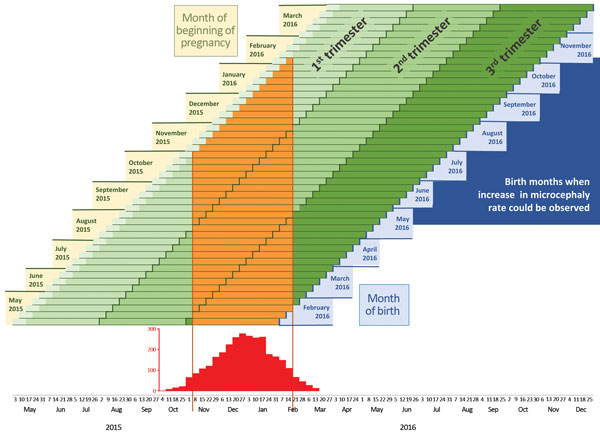Volume 22, Number 5—May 2016
Research
Projecting Month of Birth for At-Risk Infants after Zika Virus Disease Outbreaks
Figure 2

Figure 2. Projection of anticipated birth months after Zika virus transmission in a hypothetical country. Projected birth months for weekly pregnancy cohorts are based on 40-week pregnancies in a hypothetical country in which the highest level of Zika activity was from November 2015 through mid-February 2016.
Page created: April 13, 2016
Page updated: April 13, 2016
Page reviewed: April 13, 2016
The conclusions, findings, and opinions expressed by authors contributing to this journal do not necessarily reflect the official position of the U.S. Department of Health and Human Services, the Public Health Service, the Centers for Disease Control and Prevention, or the authors' affiliated institutions. Use of trade names is for identification only and does not imply endorsement by any of the groups named above.